
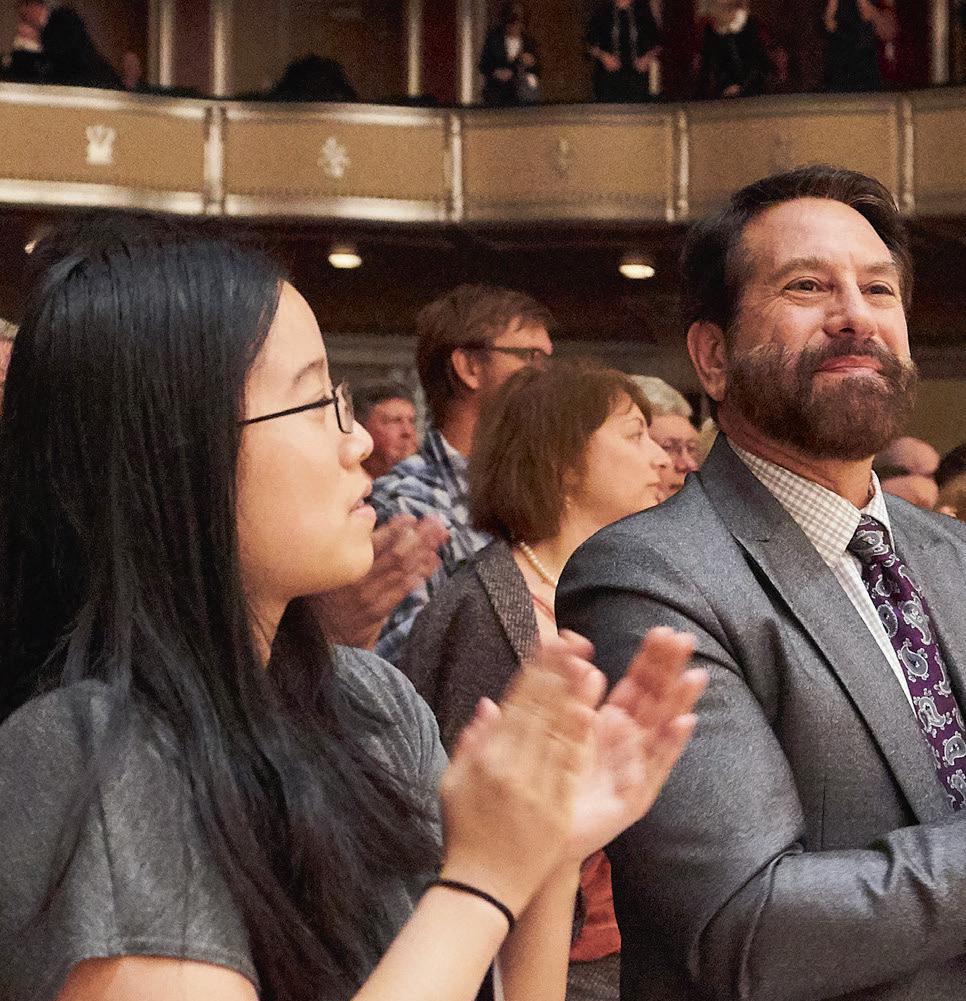










2023/2024 SEASON
JACK, JOSEPH AND MORTON MANDEL CONCERT HALL AT SEVERANCE MUSIC CENTER













JACK, JOSEPH AND MORTON MANDEL CONCERT HALL AT SEVERANCE MUSIC CENTER
Thursday, May 2, 2024, at 7:30 PM
Saturday, May 4, 2024, at 8 PM
Friday, May 3, 2024, at 11 AM
Camille Saint-Saëns (1835–1921)
Hector Berlioz (1803–1869)
Lang Lang Plays Saint-Saëns is sponsored by Jones Day Foundation.
Thursday evening’s performance is dedicated to Brenda and Marshall B. Brown in recognition of their generous support of music.
Saturday evening’s performance is dedicated to The Seven Five Fund in recognition of their generous support of music.
Piano Concerto No. 2
25 minutes in G minor, Op. 22*
I. Andante sostenuto
II. Allegro scherzando
III. Presto
Lang Lang, piano
INTERMISSION
Symphonie fantastique, Op. 14
20 minutes
55 minutes
I. Reveries — Passions: Largo — Allegro agitato e appassionato assai
II. A Ball: Allegro non troppo
III. In the Country: Adagio
IV. March to the Scaffold: Allegretto non troppo
V. Dream of the Witches’ Sabbath: Larghetto — Allegro
Total approximate running time: 1 hour 40 minutes
* Lang Lang and Saint-Saëns’s Piano Concerto No. 2 do not appear on Friday’s program, which will be performed without intermission.
Thank you for silencing your electronic devices.

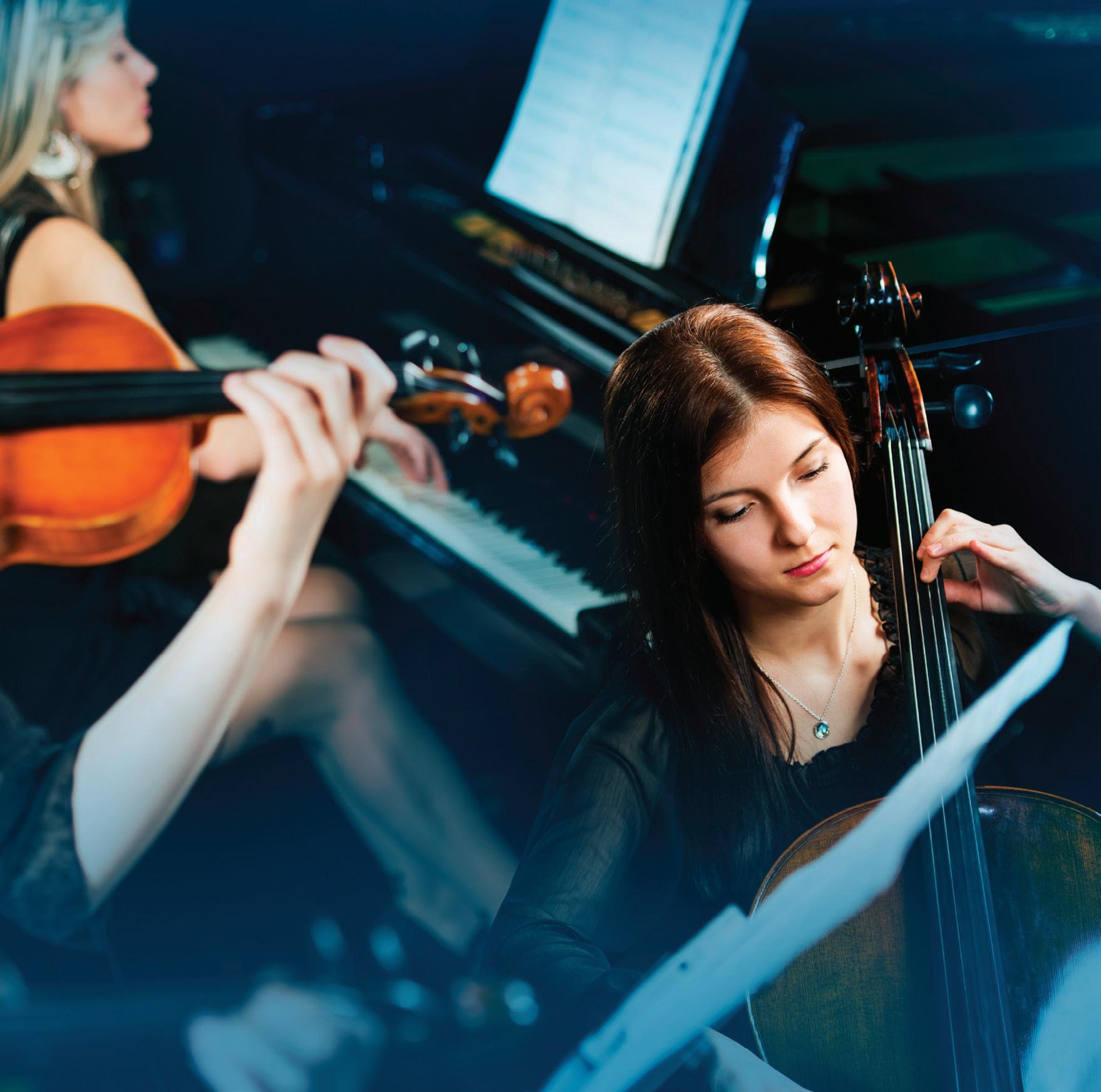
Jones Day Foundation proudly leads a standing ovation for The Cleveland Orchestra, one of the world’s most acclaimed performing ensembles. We applaud the Orchestra for its artistic excellence, creative programming, and active community engagement worldwide.
Jones Day Foundation proudly leads a standing ovation for The Cleveland Orchestra, one of the world’s most acclaimed performing ensembles. We applaud the Orchestra for its artistic excellence, creative programming, and active community engagement worldwide.
Jones Day Foundation proudly leads a standing ovation for The Cleveland Orchestra, one of the world’s most acclaimed performing ensembles. We applaud the Orchestra for its artistic excellence, creative programming, and active community engagement worldwide.

IN MAY 1868 , when Camille Saint-Saëns gave the first performance of his Second Piano Concerto in Paris, Hector Berlioz was a mortally sick man with less than a year to live. He no longer attended concerts, even though he would certainly have applauded the younger composer’s remarkable talents as pianist and composer. Saint-Saëns had worked conscientiously with Berlioz in preparing the vocal score of the latter’s Lélio (the rarely heard sequel to Symphonie fantastique) in 1855, and he was a regular visitor to the dying composer’s bedside in 1869. Berlioz’s Orchestration Treatise was his bible, as it was for Georges Bizet and all younger French composers, who recognized Symphonie fantastique as the work which blew apart the traditions of symphonic writing for the post-Beethoven age.
Berlioz’s special feeling for the orchestra and his quest for new sounds and combinations has often been attributed to the fact that he never learned to play more than a few chords on the piano. He never wrote piano music except as accompaniment for songs. He was a close friend of Franz Liszt, yet he would never write the cascades of notes that made the piano such a popular instrument in the 19th century. For Saint-Saëns, on the other hand, such brilliant feats of pianism were second nature, and he remained a busy concert pianist throughout his long life, touring all over the world. In his 86th year he was still playing his virtuosic Rapsodie d’Auvergne for piano and orchestra.
By a strange irony, the two heavy bells whose tolling creates such a grim background to the Dies irae chant in the last movement of Symphonie fantastique were often unavailable when Berlioz conducted the work himself. On such occasions he would have the part played on a piano, with ponderous double octaves, and the work was even published in that form. — Hugh Macdonald
music I want children to see a different dimension of life. I want to show them how music can help them achieve their dreams.
FOUNDER & PRESIDENT
We strive to change the way music education is perceived in the public school system. Keys of Inspiration® is a music intervention program, focusing on selected schools nationwide with limited resources. With KOI, we are able to reach students of all backgrounds, and give them a chance to experience the power of music by encouraging piano performance at all levels as a means of social development for youth.

The Young Scholars™ program is a music education initiative designed to identify and support talented young pianists in their professional development. Every two years, we accept applications for a new class of Young Scholars™. Applications are reviewed by Lang Lang, who personally selects a limited number of exceptionally talented young pianists from around the world, offering them mentorship, tutelage, and unique opportunities for performance.




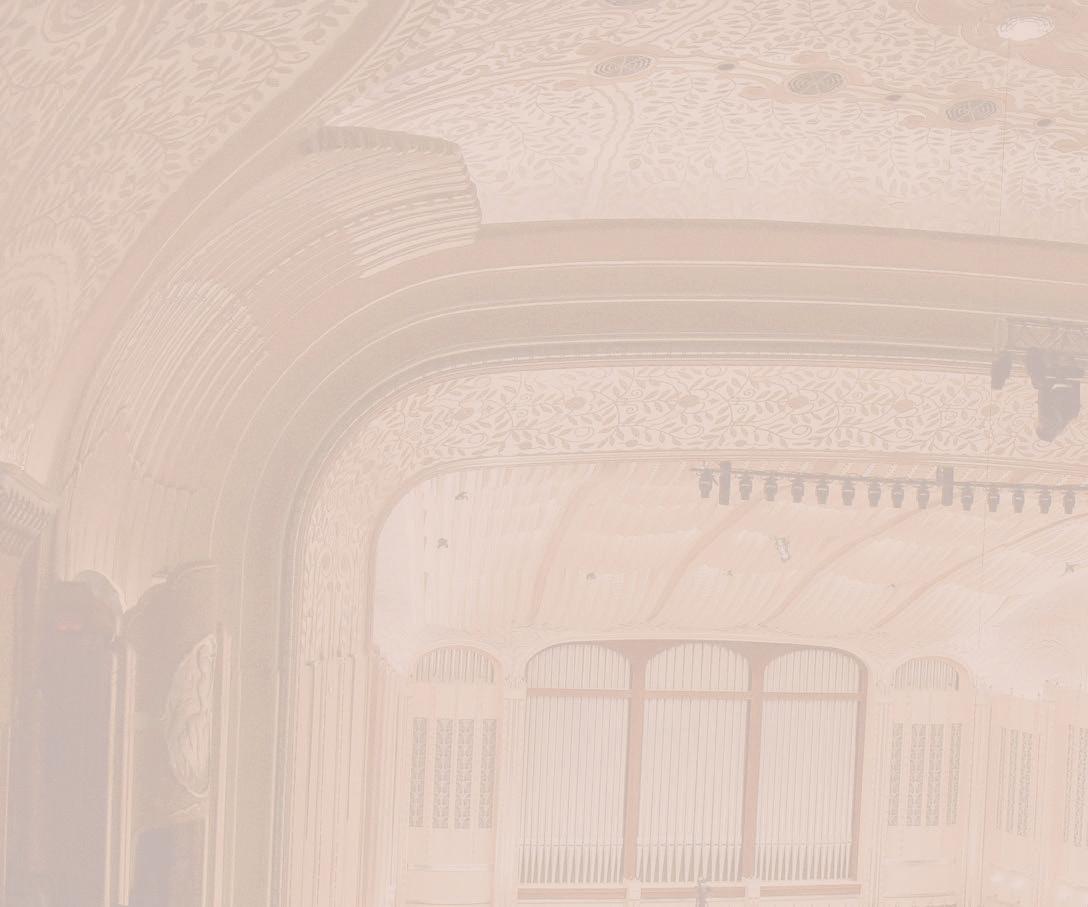
The Cleveland Orchestra would like to thank the following donors for supporting Lang Lang’s performance:

 Richard and Michelle Jeschelnig
Bowen Huang and Rui Meng
Yan Jin
Kathy Ruekberg
Jing Wang
Richard and Michelle Jeschelnig
Bowen Huang and Rui Meng
Yan Jin
Kathy Ruekberg
Jing Wang
BORN : October 9, 1835, in Paris
DIED: December 16, 1921, in Algiers
▶ COMPOSED: 1868
▶ WORLD PREMIERE: May 13, 1868, with the composer at the piano under the direction of Anton Rubinstein
▶ CLEVELAND ORCHESTRA PREMIERE: November 3, 1919, with Nikolai Sokoloff and a piano playing from a mechanical roll recorded by Harold Bauer
▶ ORCHESTRATION: 2 flutes, 2 oboes, 2 clarinets, 2 bassoons, 2 horns, 2 trumpets, timpani, percussion (cymbals), and strings, plus solo piano
▶ DURATION: about 25 minutes
CAMILLE SAINT-SAËNS ’S PLACE in the concert repertoire seems assured by such perennial favorites as the “Organ” Symphony, Danse macabre, and Carnival of the Animals. Yet the vast majority of his enormous output is rarely performed nowadays.
Whatever the reasons of this relative neglect, in his own day Saint-Saëns was recognized as an exceptional phenomenon. A child prodigy who composed music starting at age 3 (a feat that, as far as we know, only Mozart had accomplished before him), he grew up to become an adult prodigy whose musicianship was the stuff of legend. He was a pianist of astounding virtuosity and an awesome sight-reader. He used to say that he wrote music like apples grew on a
tree, penning around 300 compositions before his death at age 86. A true Renaissance man, he was versed in astronomy, mathematics, botany, and other scientific subjects. He wrote poetry, a play that was performed with success, and witty essays about diverse musical topics.
Saint-Saëns counted several of the greatest 19th-century musicians among his friends. Hector Berlioz admired his talents, as did Franz Liszt, who gave him much encouragement and promoted the performance of his opera Samson and Delila in Weimar.
Camille Saint-Saëns wrote around 300 compositions during his long career, including operas, symphonies, chamber music, and one of the earliest film scores.


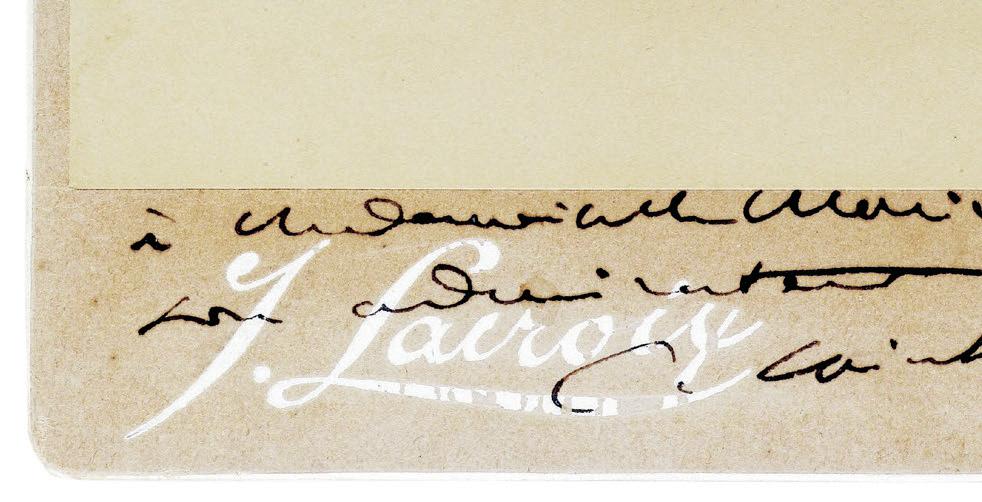
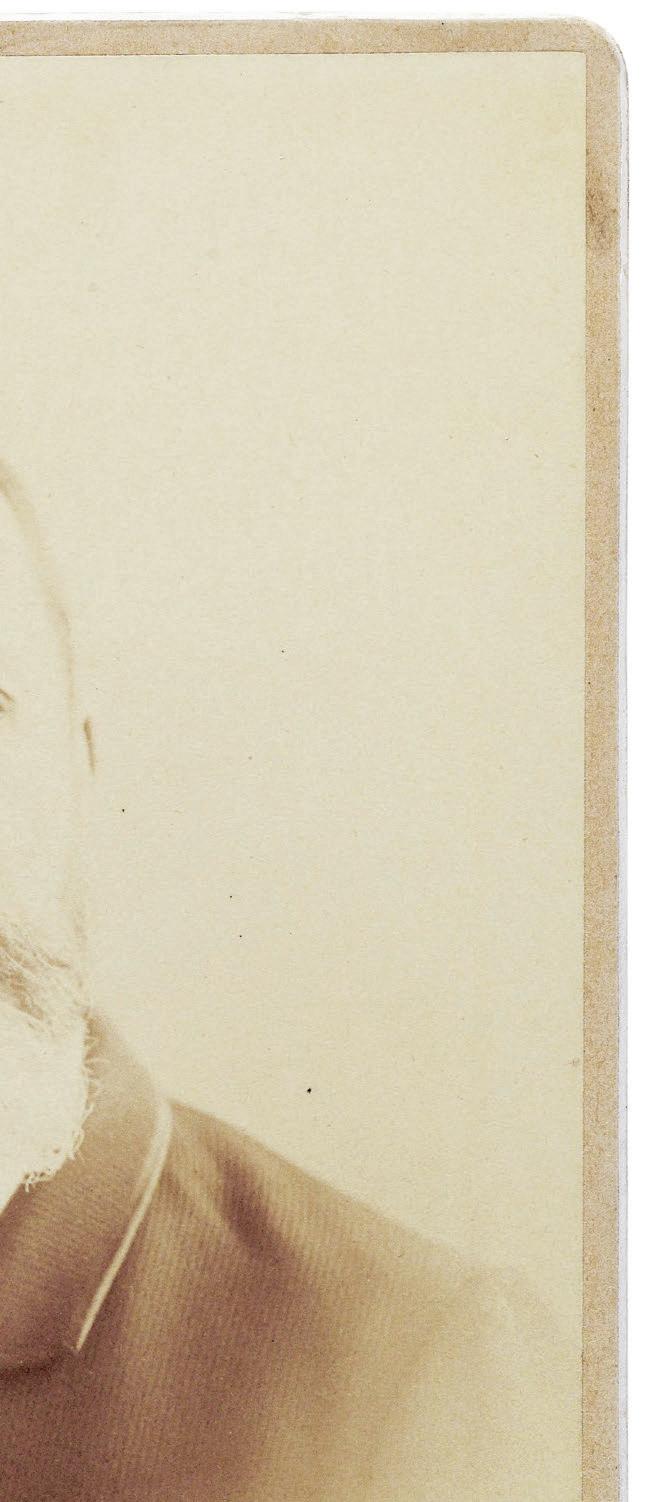

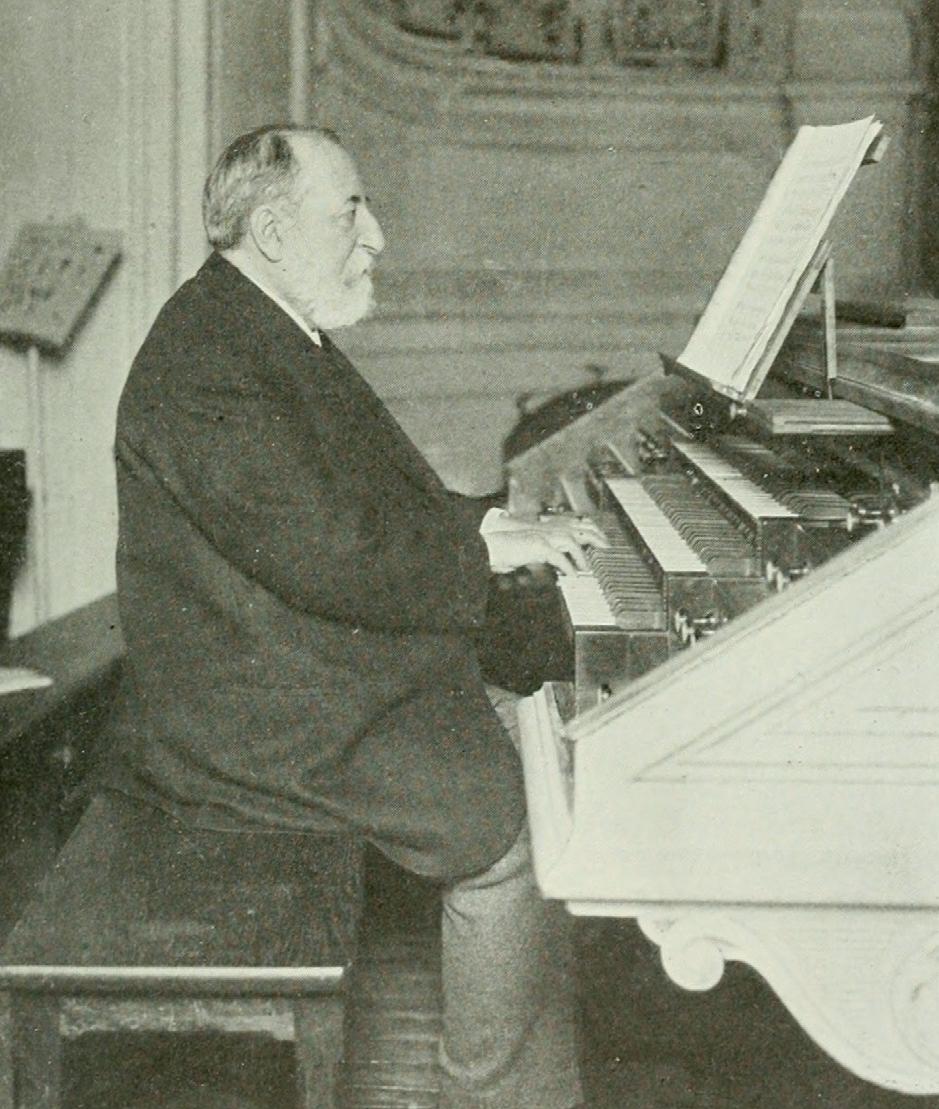
The story of the G-minor Piano Concerto is typical of the man and the way he worked. As Saint-Saëns later recalled:
“I happened to be at a concert with the great pianist Anton Rubinstein in the Salle Pleyel when he said to me, ‘I haven’t conducted an orchestra in Paris yet. Let’s put on a concert that will give me the opportunity of taking the baton.’
‘With pleasure,’ I answered. We asked when the Salle Pleyel would be free and we were told we should have to wait three weeks. ‘Very well,’ I said. ‘In those three weeks I will write a concerto for the occasion.’ And I wrote the G-minor Concerto which accordingly had its first performance under such distinguished patronage.”
Writing a three-movement concerto in less than three weeks is virtually tantamount to improvisation. The ideas must have come to Saint-Saëns with such a speed that his only difficulty was how to write them down fast enough. The result is a reflection of Saint-Saëns’s amazing facility at writing melodies and his ability to devise coherent musical structures without the slightest effort.
We can imagine Saint-Saëns sitting at the piano beginning to improvise the first movement of this concerto. Having decided on the key — G minor — he strikes the lowest G on the keyboard with its upper octave, and starts playing arpeggios with his right hand, which brings a certain Bach prelude to mind. (We should remember that Saint-Saëns was the organist of the Madeleine Church in Paris at the time of this concerto; it is very likely that he improvised there in Bach’s style on many a Sunday.)
Then, suddenly, Saint-Saëns decides it is time to change centuries, and, without any warning, he launches into a cascade of runs and arpeggios reminiscent of his friend Liszt. The orchestra, silent until now, breaks in with a few chords. But we have yet to hear a real theme, so Saint-Saëns next turns his attention to the invention of a melody. After a measure of introduction, in which we hear the accompaniment alone, a beautiful espressivo melody unfolds. Even this theme could well have been improvised by a musician with SaintSaëns’s skill. What follows, however, would have been hard to perform
without a great deal of practicing, even though it may have been just as easy to conceive mentally.
The same lightness of touch and facility of invention characterize the second and third movements. The second-movement Allegro scherzando is one of the most popular things SaintSaëns ever wrote. Its nimble first melody jumps and prances along in good cheer. There is a second theme of a more cantabile (songlike) character. The whole movement consists of the free and happy alternation of the two themes.
secure in performance. He played it many more times over the years at concerts including a memorable one in London in 1893 where he shared the program with Tchaikovsky. (Both composers were in England at the time to receive honorary degrees from Cambridge University.)
In the early 1900s, the septuagenarian Saint-Saëns visited the United States on a concert tour that was a great personal triumph. At this point, he again had problems with performing his Second Concerto. As he wrote in his article “Impressions of America”:
The ideas [for the Second Piano Concerto] must have come to Saint-Saëns with such a speed that his only difficulty was how to write them down fast enough.
The sparkling third movement is based on the rhythm of the Italian tarantella dance. Like the second movement, it has two main themes that take turns; the relentless drive of the music continues unabated to the end.
Although Saint-Saëns was able to complete the concerto in just 17 days, mastering the technical difficulties of his own work was another matter. “I played very badly,” he wrote after the first performance, “and, except for the scherzo, which was an immediate success, it did not go well.” Opinion changed rapidly, however, once Saint-Saëns became more
“I had to endeavor to recover my fingering of past days in order to play my Concerto in G minor which everybody wished to hear interpreted by the composer. This did not please me by any means, for nowadays young pianists play it better than I do. … Well then, I played the G minor [in] Washington before President [Theodore] Roosevelt who, after receiving me most affably, did me the rare and signal honor of coming to listen to my playing.”
— Peter Laki




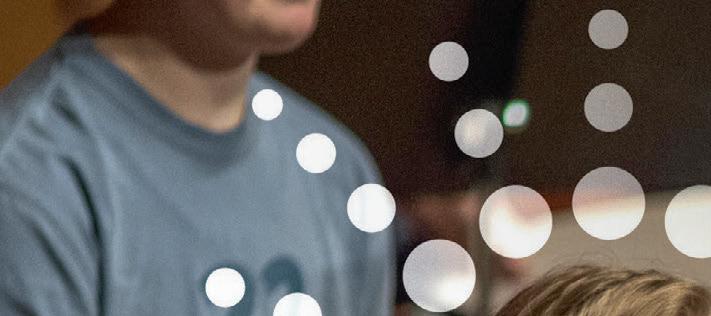


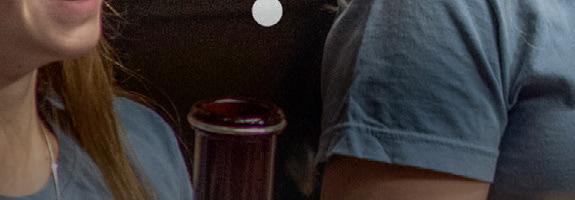
















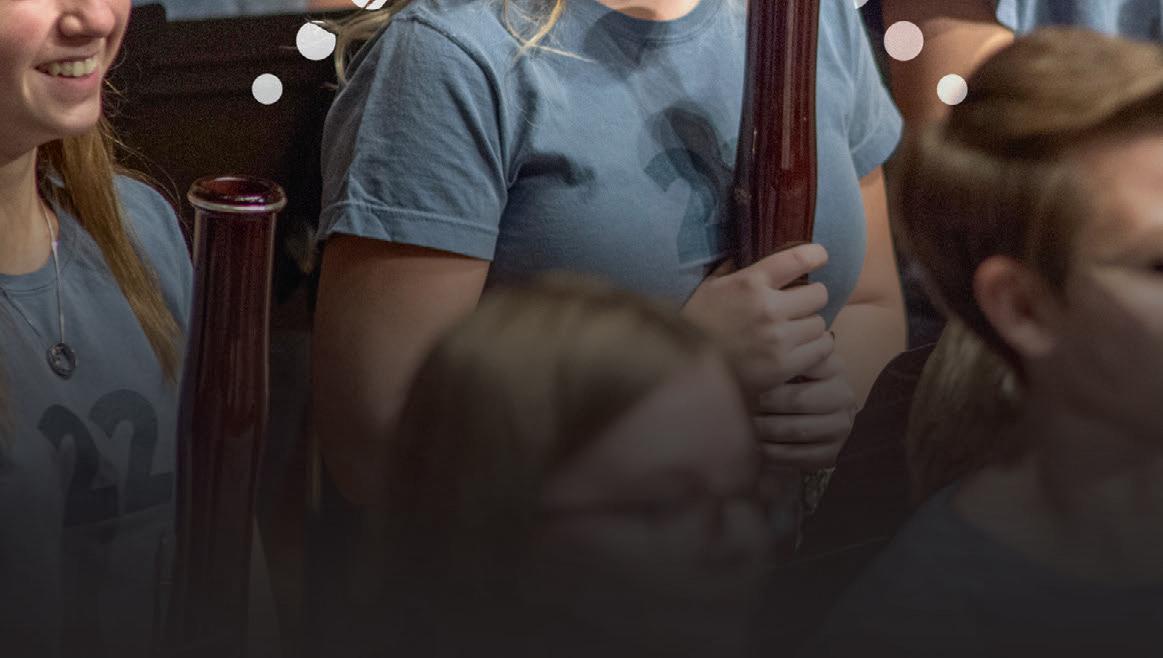











BORN : December 11, 1803, in La Côte-Saint-André, Isère, France
DIED: March 8, 1869, in Paris
▶ COMPOSED: 1830
▶ WORLD PREMIERE: December 5, 1830, at the Paris Conservatoire, conducted by François-Antoine Habeneck
▶ CLEVELAND ORCHESTRA PREMIERE: April 10, 1924, at Masonic Auditorium with Nikolai Sokoloff conducting
▶ ORCHESTRATION: 2 flutes (2nd doubling piccolo), 2 oboes (2nd doubling English horn), 2 clarinets (1st doubling E-flat clarinet), 4 bassoons, 4 horns, 2 trumpets, 2 cornets, 3 trombones, 2 tubas, timpani, percussion (cymbals, bass drum, snare drum, bells), 2 harps, and strings
▶ DURATION: about 55 minutes
WHEN A NEW YORK NEWSPAPER in 1868 described Hector Berlioz’s Symphonie fantastique as “a nightmare set to music,” it was meant to be an insult. Yet this was exactly what Berlioz intended — not that the critic should have a miserable evening, but that the listener should grasp the nightmarish agonies of the composer’s own experience.
Of Berlioz’s suffering there can be no doubt. One has only to read his letters from 1829 (when Berlioz was 25 years old) to glimpse the torment of a composer whose mind was bursting with musical ideas and whose heart was bleeding.
The object of his passion was an Irish actress, Harriet Smithson, whom Berlioz had seen on the stage two years
before in the roles of Juliet and Ophelia. Since then, he had viewed her only at a distance, while she was still unaware of his very existence. How was this all-consuming passion to be expressed? His first thought, naturally enough, was a dramatic Shakespeare setting, perhaps Romeo and Juliet, for which he composed, it seems, a few movements. He then set several of Thomas Moore’s Irish Melodies to music, evoking the land of her birth. Once he had encountered Beethoven’s symphonies, especially the “Eroica” (which impressed him just as strongly as Shakespeare), he liked the idea of writing a Beethovenian symphony — excluding the customary triumphant ending that found no parallel in his own world.
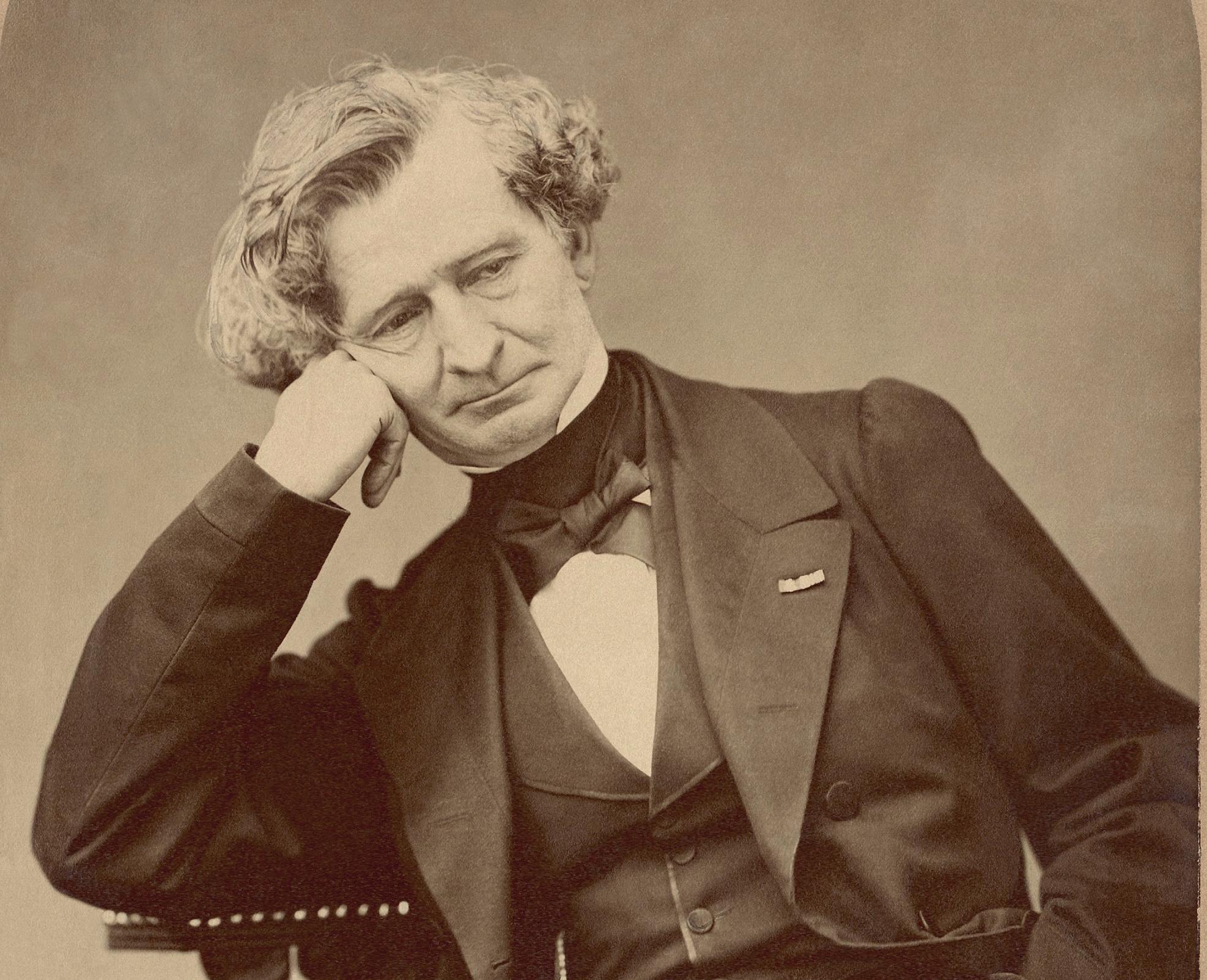
The dilemma was resolved early in 1830 when he was informed, evidently by a new aspirant to the role of lover, that Smithson was free and easy with her favors and in no way worthy of the exalted passion that consumed him day and night. Now, he suddenly realized, he could represent this dramatic episode in his life as a program symphony, with a demonic, orgiastic finale in which both he and she are condemned to hell.
The symphony was speedily written down in little more than three months and performed for the first time later that year. It became a main item in Berlioz’s many concerts in the 1830s, for each of which he issued a printed program explaining the symphony’s narrative.
Although the symphony is explicitly about an artist and his beloved, it borrows from Romeo and Juliet and more obviously from his own obsession with Smithson. Even after Berlioz had, by a strange irony, met and married Smithson three years later — it was not a happy union, however — the symphony’s dramatic program remained. There are few similar episodes to this extraordinary tale of love blooming in real life after it had been violently repudiated and exorcized in a work of art.
All five movements contain a single recurrent musical theme, the idée fixe,
or obsession, which represents the artist’s love and is transformed according to the context in which the artist finds his beloved. After a slow introduction (Reveries), which depicts “the sickness of the soul, the flux of passion, the unaccountable joys and sorrows … before he saw his beloved,” the idée fixe is heard as the main theme of the opening movement’s Allegro section (Passions), with violins and flute lightly accompanied by sputtering lower strings. The surge of passion is aptly described in the later volcanic eruptions of the first movement, although it ends in an unexpected picture of religious consolation.
For nearly two centuries, Symphonie fantastique has remained a classic document of the Romantic era and a great virtuoso piece for orchestra ...
In the second movement (A Ball), the artist glimpses his beloved amidst a crowd of whirling dancers. A solo cornet evokes the ballroom music of Berlioz’s day and harps are introduced into the symphony orchestra for the first time. In the third movement (Scene in the Country), two shepherds call to each other on their pipes, with the music depicting the stillness of a summer evening in the country, the artist’s passionate melancholy, the wind caressing the trees, and the agitation caused by the
beloved’s appearance. At the end, the lone shepherd’s pipe is answered only by the rumble of distant thunder.
In his despair, the artist has poisoned his beloved and is condemned to death. The fourth movement portrays the March to the Scaffold, as he is led to the guillotine before the raucous jeers of the crowd. In his last moments, he sees the beloved’s image (the idée fixe in the clarinet’s highest range) before the blade falls.
In the final movement (Dream of a Witches’ Sabbath), the artist finds himself a spectator at a sinister gathering of specters and weird, mocking monsters of every kind. The idée fixe appears — horribly distorted by the squeaky highpitched E-flat clarinet — bells toll, and the religious Dies irae (Day of wrath) chant is coarsely intoned by bassoons and tubas (originally written for ophicleide, a lower-pitched keyed bugle). The witches’ round-dance gathers momentum and eventually joins together with the Dies irae before the symphony ends in a riot of brilliant orchestral sound.
For nearly two centuries, Symphonie fantastique has remained a classic document of the Romantic era and a great virtuoso piece for orchestra, melding music, literature, poetry, imagination, and personal experience into a sensational drama — a drama of the senses and of uninhibited emotion, bursting with life. — Hugh Macdonald
Hugh Macdonald is Avis H. Blewett Professor Emeritus of Music at Washington University in St. Louis. He has written books on Beethoven, Berlioz, Bizet, and Scriabin, as well as Music in 1853: The Biography of a Year
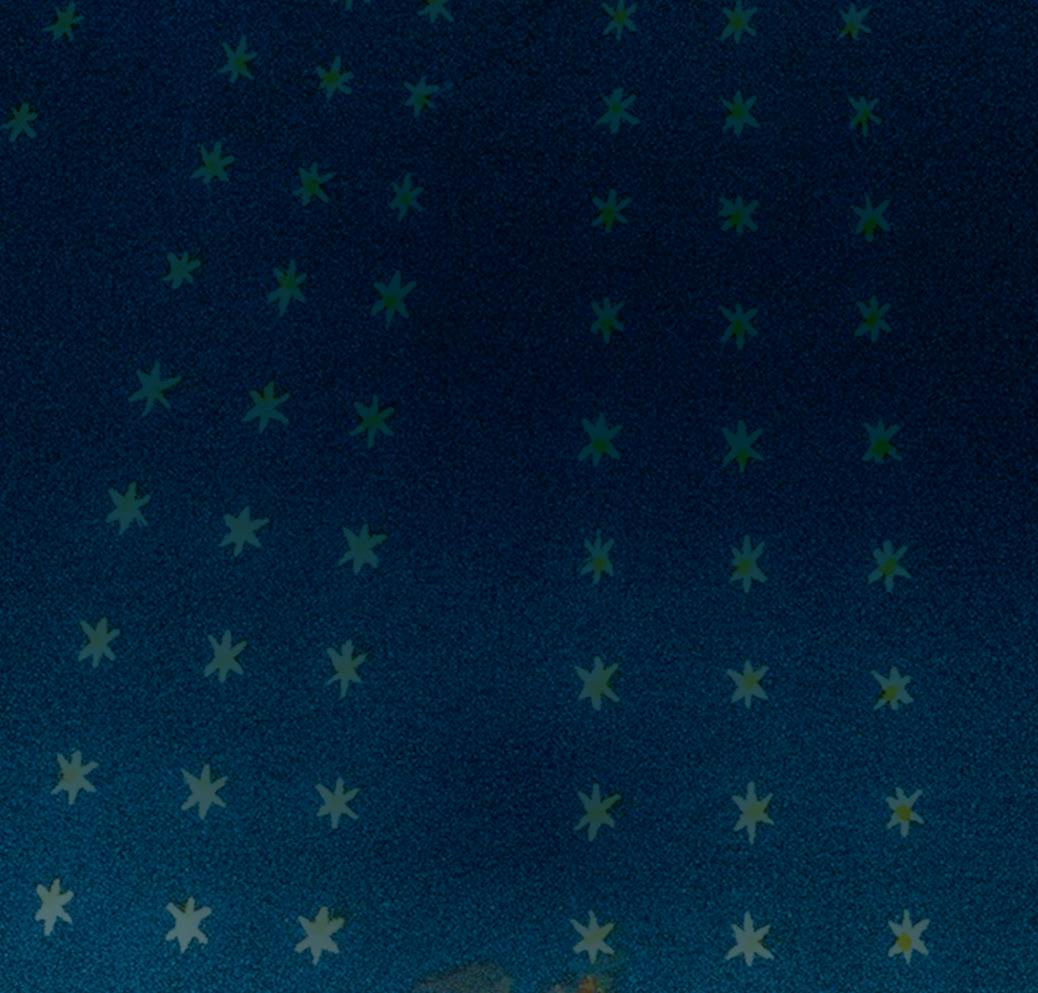


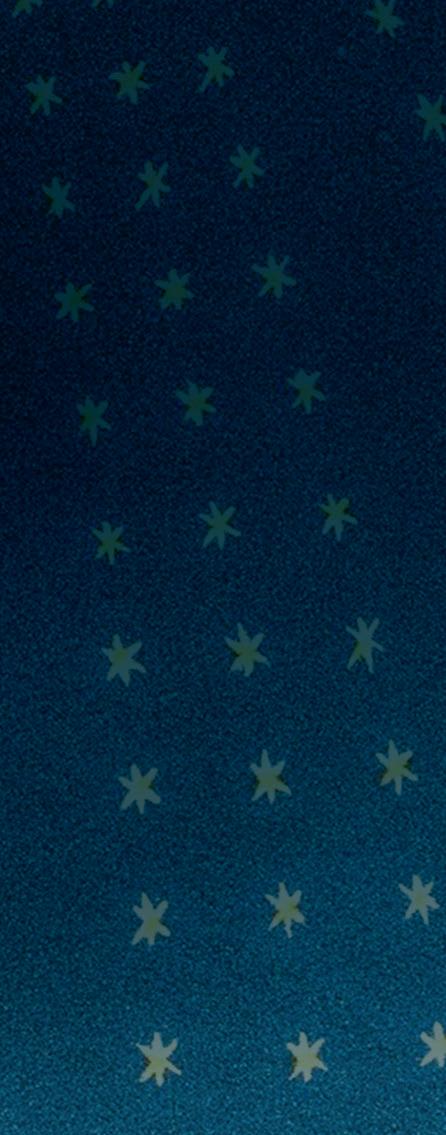


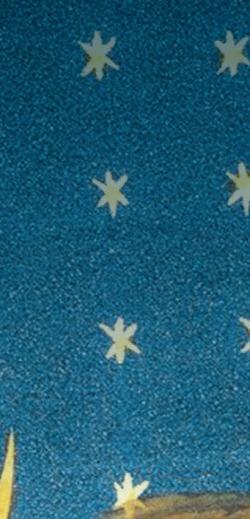











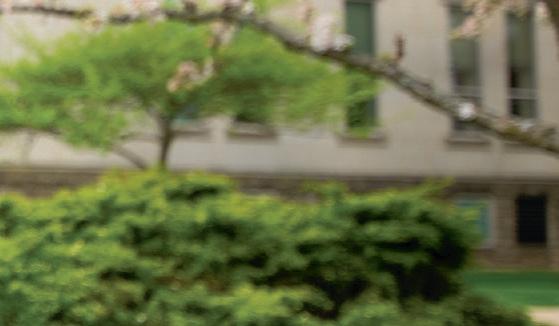
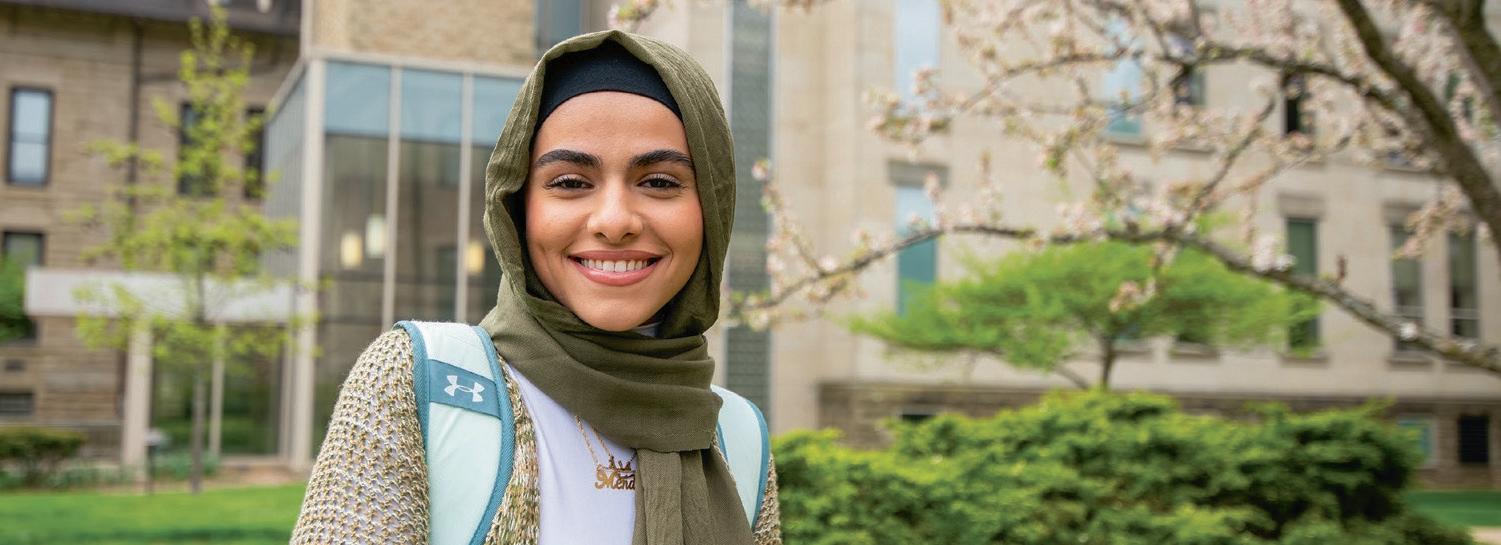



Franz Welser-Möst is among today’s most distinguished conductors. The 2023–24 season marks his 22nd year as Music Director of The Cleveland Orchestra. With the future of their acclaimed partnership extended to 2027, he will be the longest-serving musical leader in the ensemble’s history. The New York Times has declared Cleveland under WelserMöst’s direction to be “America’s most brilliant orchestra,” praising its virtuosity, elegance of sound, variety of color, and chamber-like musical cohesion.
With Welser-Möst, The Cleveland Orchestra has been praised for its inventive programming, ongoing support of new music, and innovative work in presenting operas. To date, the Orchestra and Welser-Möst have been showcased around the world in 20 international tours together.
In the 2023–24 season, Welser-Möst is a featured Perspectives Artist at Carnegie Hall, where he leads The Cleveland Orchestra and the Vienna Philharmonic as part of the series, Fall of the Weimar Republic: Dancing on the Precipice.
In addition to his commitment to Cleveland, Welser-Möst enjoys a particularly close and productive relationship with the Vienna Philharmonic as a guest conductor. He has conducted its celebrated New Year’s Concert three times, and regularly leads the orchestra
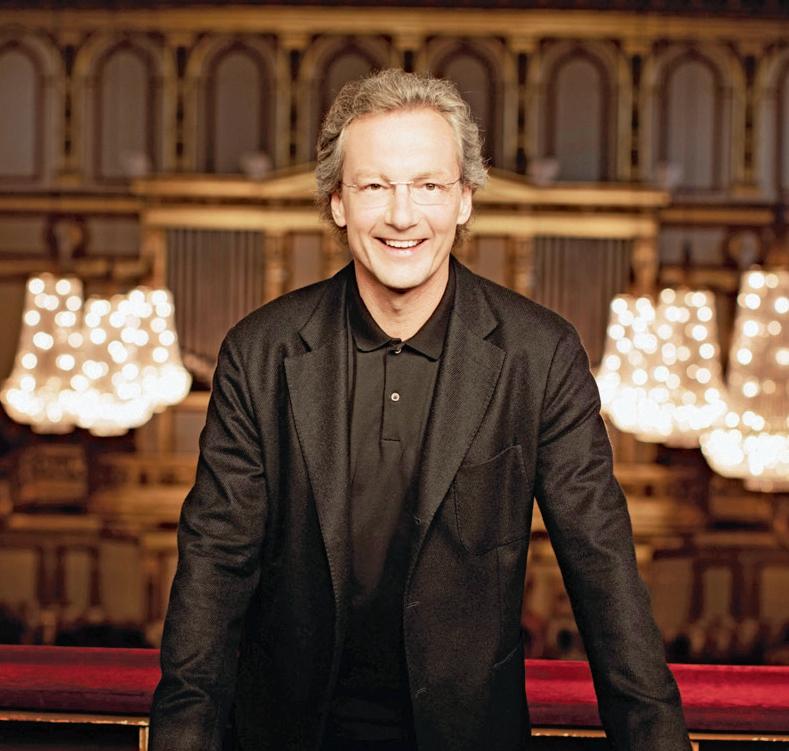
at home in Vienna, as well as on tours.
Welser-Möst is also a regular guest at the Salzburg Festival where he has led a series of acclaimed opera productions, including Rusalka, Der Rosenkavalier, Fidelio, Die Liebe der Danae, Reimann’s opera Lear, and Richard Strauss’s Salome. In 2020, he conducted Strauss’s Elektra on the 100th anniversary of its premiere. He has since returned to Salzburg to conduct additional performances of Elektra in 2021 and Giacomo Puccini’s Il trittico in 2022.
In 2019, Welser-Möst was awarded the Gold Medal in the Arts by the Kennedy Center International Committee on the Arts. Other honors include The Cleveland Orchestra’s Distinguished Service Award, two Cleveland Arts Prize citations, the Vienna Philharmonic’s “Ring of Honor,” recognition from the Western Law Center for Disability Rights, honorary membership in the Vienna Singverein, appointment as an Academician of the European Academy of Yuste, and the Kilenyi Medal from the Bruckner Society of America.




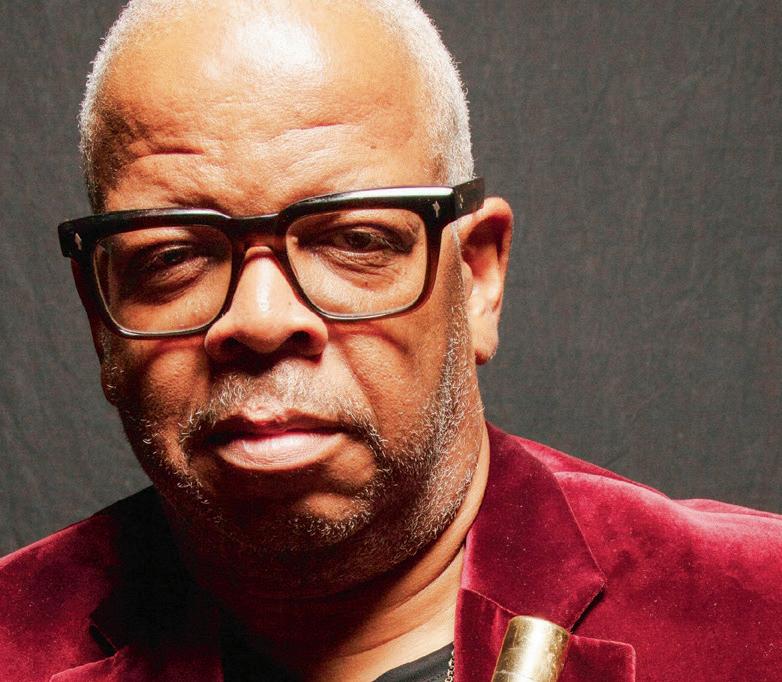
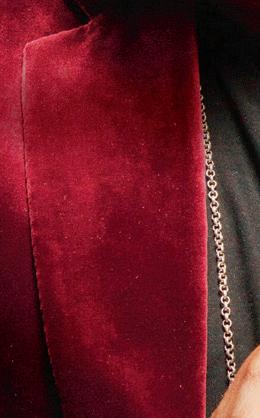



Lang Lang is a leading figure in classical music today — as a pianist, educator, and philanthropist he has become one of the world’s most influential and committed ambassadors for the arts in the 21st century. Equally happy playing for billions of viewers at the 2008 Olympic Opening Ceremony in Beijing or for just a few hundred school children, he is a master of communicating through music.
Heralded by The New York Times as “the hottest artist on the classical music planet,” Lang Lang plays sold-out concerts all over the world. He has formed ongoing collaborations with conductors including Simon Rattle, Gustavo Dudamel, and Daniel Barenboim, and performs with all the world’s top orchestras. Lang Lang frequently steps into different musical worlds; his performances at the Grammy Awards with Metallica, Pharrell Williams, and Herbie Hancock were watched by millions of viewers.
In 2008, he founded the Lang Lang International Music Foundation, aimed at cultivating tomorrow’s pianists, championing music education, and building a young audience. In 2013 Lang Lang was designated a United Nations Messenger of Peace focusing on global education.
Lang Lang started playing the piano at age 3, and won First Prize at the International Tchaikovsky Competition for Young Musicians at 13. He subsequently studied at the Curtis Institute of Music with Gary Graffman. Lang Lang’s big break came at 17, when he substituted

in a performance of Tchaikovsky’s First Piano Concerto with the Chicago Symphony Orchestra.
Lang Lang’s boundless drive to attract new audiences to classical music has brought him tremendous recognition. He was presented with the 2010 Crystal Award in Davos, was named one of the 250 Young Global Leaders by the World Economic Forum, and holds honors from the People’s Republic of China, Germany, and France. He is also the recipient of honorary doctorates from London’s Royal College of Music, the Manhattan School of Music, and New York University. In 2016, Lang Lang was invited to the Vatican to perform for Pope Francis. He has also performed for numerous other international dignitaries, including four US presidents and monarchs from many nations. Visit langlangofficial.com and langlang foundation.org for more information.
Lang Lang is managed by Columbia Artists Music LLC (camimusic.com); Jean-Jacques Cesbron, General Manager. Lang Lang is an Exclusive Recording Artist of Universal Music Group and Deutsche Grammophon.


Whether escaping the bustle of daily life with a beloved classic or discovering new worlds with the less familiar, come share the extraordinary this season with The Cleveland Orchestra .
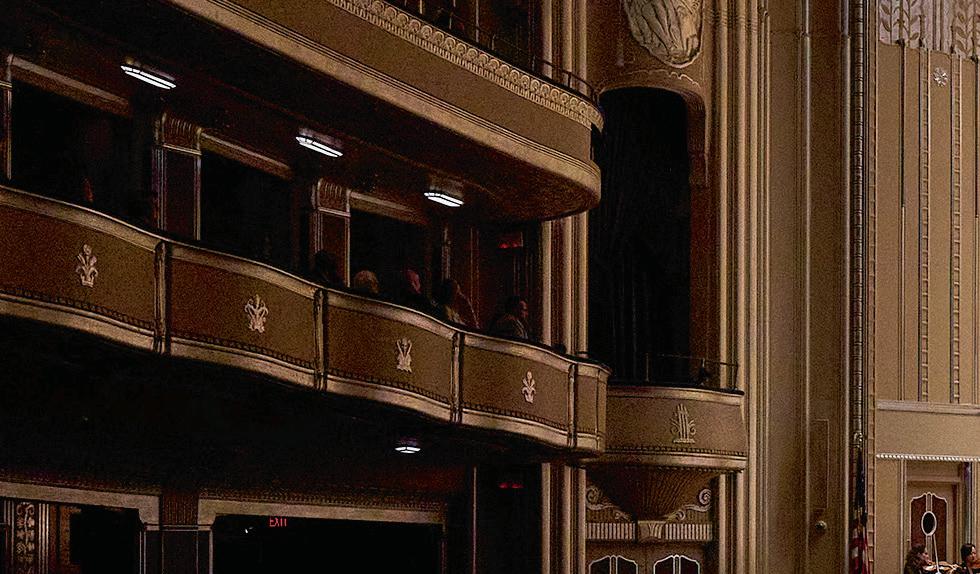



When you subscribe, you provide vital support to your Cleveland Orchestra and enjoy these exclusive benefits:
•The best seats at the best prices
• Free and easy ticket exchanges
• Purchase your parking in advance
• 20% off additional ticket purchases
• 10% off at The Cleveland Orchestra Store
• Money back guarantee
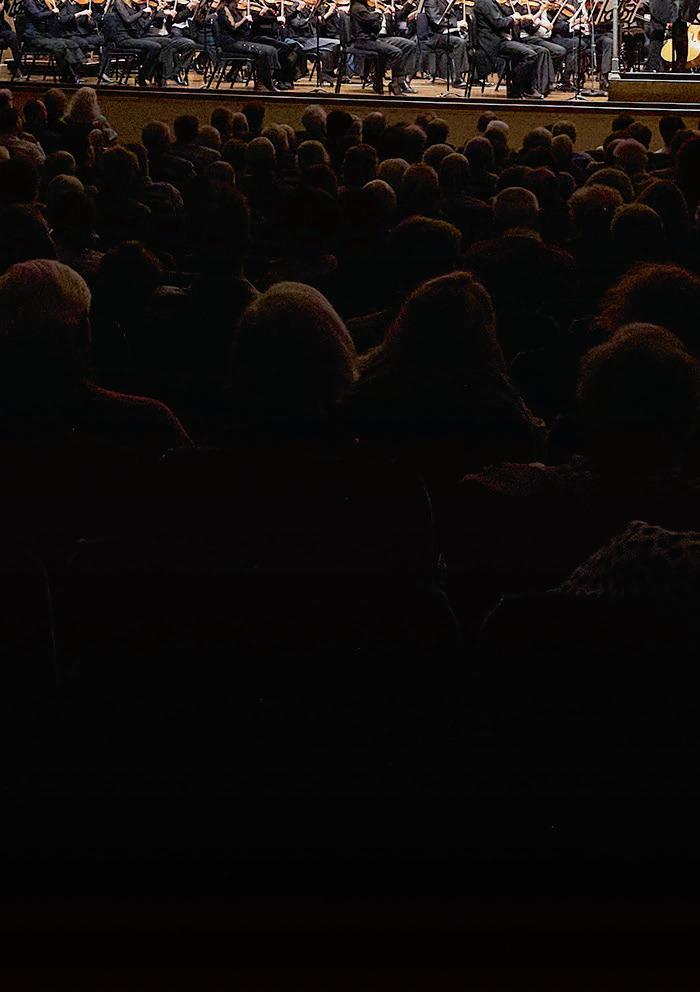
NOW IN ITS SECOND CENTURY , The Cleveland Orchestra, under the leadership of Music Director Franz Welser-Möst since 2002, is one of the most sought-after performing ensembles in the world. Year after year, the ensemble exemplifies extraordinary artistic excellence, creative programming, and community engagement. The New York Times has called Cleveland “the best in America” for its virtuosity, elegance of sound, variety of color, and chamber-like musical cohesion.

Founded by Adella Prentiss Hughes, the Orchestra performed its inaugural concert in December 1918. By the middle of the century, decades of growth and sustained support had turned it into one of the most admired globally.
The past decade has seen an increasing number of young people attending concerts, bringing fresh attention to The Cleveland Orchestra’s legendary sound and committed programming. More recently, the Orchestra launched several bold digital projects, including the streaming platform Adella, the podcast On a Personal Note, and its own recording label, a new chapter in the Orchestra’s long and distinguished recording and broadcast history. Together, they have captured the Orchestra’s unique artistry and the musical achievements of the Welser-Möst and Cleveland Orchestra partnership.
The 2023 – 24 season marks Franz Welser-Möst’s 22nd year as music director, a period in which The Cleveland Orchestra earned unprecedented acclaim around the world, including a series of residencies at the Musikverein in Vienna, the first of its kind by an American orchestra, and a number of acclaimed opera presentations.
Since 1918, seven music directors — Nikolai Sokoloff, Artur Rodziński, Erich Leinsdorf, George Szell, Lorin Maazel, Christoph von Dohnányi, and Franz Welser-Möst — have guided and shaped the ensemble’s growth and sound. Through concerts at home and on tour, broadcasts, and a catalog of acclaimed recordings, The Cleveland Orchestra is heard today by a growing group of fans around the world.


FIRST VIOLINS
Jung-Min Amy Lee
ASSOCIATE CONCERTMASTER
Gretchen D. and Ward Smith Chair
Jessica Lee
ASSISTANT CONCERTMASTER
Clara G. and George P. Bickford Chair
Stephen Tavani
ASSISTANT CONCERTMASTER
Dr. Ronald H. Krasney Chair
Wei-Fang Gu
Drs. Paul M. and Renate H. Duchesneau Chair
Kim Gomez
Elizabeth and Leslie Kondorossy Chair
Chul-In Park
Harriet T. and David L. Simon Chair
Miho Hashizume
Theodore Rautenberg Chair
Jeanne Preucil Rose
Larry J.B. and Barbara S.
Robinson Chair
Alicia Koelz
Oswald and Phyllis Lerner
Gilroy Chair
Yu Yuan
Patty and John Collinson Chair
Isabel Trautwein
Trevor and Jennie Jones Chair
Katherine Bormann
Analisé Denise Kukelhan
Gladys B. Goetz Chair
Zhan Shu
Youngji Kim
Genevieve Smelser
SECOND VIOLINS
Stephen Rose*
Alfred M. and Clara T. Rankin Chair
Jason Yu2
James and Donna Reid Chair
Eli Matthews1
Patricia M. Kozerefski and Richard J. Bogomolny Chair
Sonja Braaten Molloy
Carolyn Gadiel Warner
Elayna Duitman
Ioana Missits
Jeffrey Zehngut
Sae Shiragami
Kathleen Collins
Beth Woodside
Emma Shook
Dr. Jeanette Grasselli Brown and Dr. Glenn R. Brown Chair
Yun-Ting Lee
Jiah Chung Chapdelaine
Liyuan Xie
VIOLAS
Wesley Collins*
Chaillé H. and Richard B.
Tullis Chair
Stanley Konopka2
Mark Jackobs
Jean Wall Bennett Chair
Lisa Boyko
Richard and Nancy Sneed Chair
Richard Waugh
Lembi Veskimets
The Morgan Sisters Chair
Eliesha Nelson
Anthony and Diane
Wynshaw-Boris Chair
Joanna Patterson Zakany
William Bender
Gareth Zehngut
CELLOS
Mark Kosower*
Louis D. Beaumont Chair
Richard Weiss1
The GAR Foundation Chair
Charles Bernard2
Helen Weil Ross Chair
Bryan Dumm
Muriel and Noah Butkin Chair
Tanya Ell
Thomas J. and Judith Fay
Gruber Chair
Ralph Curry
Brian Thornton
William P. Blair III Chair
David Alan Harrell
Martha Baldwin
Dane Johansen
Paul Kushious
BASSES
Maximilian Dimoff*
Clarence T. Reinberger Chair
Derek Zadinsky2
Charles Paul1
Mary E. and F. Joseph Callahan Chair
Mark Atherton
Thomas Sperl
Henry Peyrebrune
Charles Barr Memorial Chair
Charles Carleton
Scott Dixon
HARP
Trina Struble*
Alice Chalifoux Chair
FLUTES
Joshua Smith*
Elizabeth M. and William C. Treuhaft Chair
Saeran St. Christopher
Jessica Sindell2
Austin B. and Ellen W. Chinn Chair
Mary Kay Fink
PICCOLO
Mary Kay Fink
Anne M. and M. Roger Clapp Chair
Frank Rosenwein*
Edith S. Taplin Chair
Corbin Stair
Sharon and Yoash Wiener Chair
Jeffrey Rathbun2
Everett D. and Eugenia S. McCurdy Chair
Robert Walters
ENGLISH HORN
Robert Walters
Samuel C. and Bernette K.
Jaffe Chair
CLARINETS
Afendi Yusuf*
Robert Marcellus Chair
Robert Woolfrey
Victoire G. and Alfred M. Rankin, Jr. Chair
Daniel McKelway2
Robert R. and Vilma L. Kohn
Chair
Amy Zoloto
E-FLAT CLARINET
Daniel McKelway
Stanley L. and Eloise M. Morgan Chair
BASS CLARINET
Amy Zoloto
Myrna and James Spira Chair
BASSOONS
John Clouser*
Louise Harkness Ingalls Chair
Gareth Thomas
Barrick Stees2
Sandra L. Haslinger Chair
Jonathan Sherwin
CONTRABASSOON
Jonathan Sherwin
HORNS
Nathaniel Silberschlag*
George Szell Memorial Chair
Michael Mayhew§
Knight Foundation Chair
Jesse McCormick
Robert B. Benyo Chair
Hans Clebsch
Richard King
Meghan Guegold Hege

TRUMPETS
Michael Sachs*
Robert and Eunice Podis Weiskopf Chair
Jack Sutte
Lyle Steelman2
James P. and Dolores D. Storer Chair
Michael Miller
CORNETS
Michael Sachs*
Mary Elizabeth and G. Robert Klein Chair
Michael Miller
TROMBONES
Brian Wendel*
Gilbert W. and Louise I. Humphrey Chair
Richard Stout
Alexander and Marianna C. McAfee Chair
Shachar Israel2
BASS TROMBONE
Luke Sieve
EUPHONIUM & BASS TRUMPET
Richard Stout
TUBA
Yasuhito Sugiyama*
Nathalie C. Spence and Nathalie S. Boswell Chair
TIMPANI vacant
PERCUSSION
Marc Damoulakis*
Margaret Allen Ireland Chair
Thomas Sherwood
Tanner Tanyeri
KEYBOARD INSTRUMENTS
Carolyn Gadiel Warner
Marjory and Marc L. Swartzbaugh Chair
LIBRARIANS
Michael Ferraguto
Joe and Marlene Toot Chair
Donald Miller
Gabrielle Petek
ENDOWED CHAIRS CURRENTLY UNOCCUPIED
Elizabeth Ring and William Gwinn Mather Chair
Blossom-Lee Chair
Virginia M. Linsdseth, PhD, Chair
Paul and Lucille Jones Chair
Charles M. and Janet G.
Kimball Chair
Sunshine Chair
Otto G. and Corinne T. Voss Chair
Mr. and Mrs. Richard K. Smucker Chair
Rudolf Serkin Chair
Christoph von Dohnányi
MUSIC DIRECTOR LAUREATE
Daniel Reith
ASSISTANT CONDUCTOR
Sidney and Doris Dworkin Chair
Lisa Wong
DIRECTOR OF CHORUSES
Frances P. and Chester C. Bolton Chair
* Principal
§ Associate Principal
1 First Assistant Principal
2 Assistant Principal
This roster lists full-time members of The Cleveland Orchestra. The number and seating of musicians onstage varies depending on the piece being performed. Seating within the string sections rotates on a periodic basis.


Experience The Cleveland Orchestra’s digital platform with new & improved features.

NEW Concert Experiences
Experience on-demand concerts with exclusive interviews and behind-the-scenes features!
Now available: In the Moment featuring Prokofiev’s Symphony No. 6.
NEW Livestreamed Concerts
Enjoy six concerts broadcast live from Severance throughout the 2024–25 season.
COMING SOON
Archival Audio Recordings
By popular demand, stream exclusive recordings from The Cleveland Orchestra’s audio archives.
NEW Educational Content
Access videos and learning resources for children, students, and teachers. Visit stream.adella.live/premium or scan the QR code to secure your subscription today!

Questions? Email adellahelp@clevelandorchestra.com or call 216-231-7300


The Cleveland Orchestra is committed to creating a comfortable, enjoyable, and safe environment for all guests at Severance Music Center. While mask and COVID-19 vaccination are recommended they are not required. Protocols are reviewed regularly with the assistance of our Cleveland Clinic partners; for up-to-date information, visit: clevelandorchestra. com/attend/health-safety
As a courtesy to the audience members and musicians in the hall, late-arriving patrons are asked to wait quietly until the first convenient break in the program. These seating breaks are at the discretion of the House Manager in consultation with the performing artists.
As a courtesy to others, please silence all devices prior to the start of the concert.
Audio recording, photography, and videography are prohibited during performances at Severance. Photographs can only be taken when the performance is not in progress.
For the comfort of those around you, please reduce the volume on hearing aids and other devices that may produce a noise that would detract from the program. For Infrared Assistive-Listening Devices, please see the House Manager or Head Usher for more details.
Download today for instant, secure, and paperless access to your concert tickets.
For more information and direct links to download, visit clevelandorchestra.com/ticketwallet or scan the code with your smartphone camera to download the app for iPhone or Android.
Available for iOS and Android on Google Play and at the Apple App Store.
Contact an usher or a member of house staff if you require medical assistance. Emergency exits are clearly marked throughout the building. Ushers and house staff will provide instructions in the event of an emergency.
Regardless of age, each person must have a ticket and be able to sit quietly in a seat throughout the performance. Classical Season subscription concerts are not recommended for children under the age of 8. However, there are several age-appropriate series designed specifically for children and youth, including Music Explorers (for 3 to 6 years old) and Family Concerts (for ages 7 and older).
The Cleveland Orchestra is grateful to the following organizations for their ongoing generous support of The Cleveland Orchestra: the State of Ohio and Ohio Arts Council and to the residents of Cuyahoga County through Cuyahoga Arts and Culture.
Cleveland Orchestra performances are broadcast as part of regular programming on ideastream/WCLV Classical 90.3 FM, Saturdays at 8 PM and Sundays at 4 PM.
The Cleveland Orchestra is proud of its long-term partnership with Kent State University, made possible in part through generous funding from the State of Ohio. The Cleveland Orchestra is proud to have its home, Severance Music Center, located on the campus of Case Western Reserve University, with whom it has a long history of collaboration and partnership.
© 2024 The Cleveland Orchestra and the Musical Arts Association Program books for Cleveland Orchestra concerts are produced by The Cleveland Orchestra and are distributed free to attending audience members.
EDITORIAL
Kevin McBrien, Publications Manager
The Cleveland Orchestra kmcbrien@clevelandorchestra.com
DESIGN
Elizabeth Eddins, Eddinsdesign eddinsdesign@gmail.com
ADVERTISING
Live Publishing Company, 216-721-1800
clevelandorchestra.com
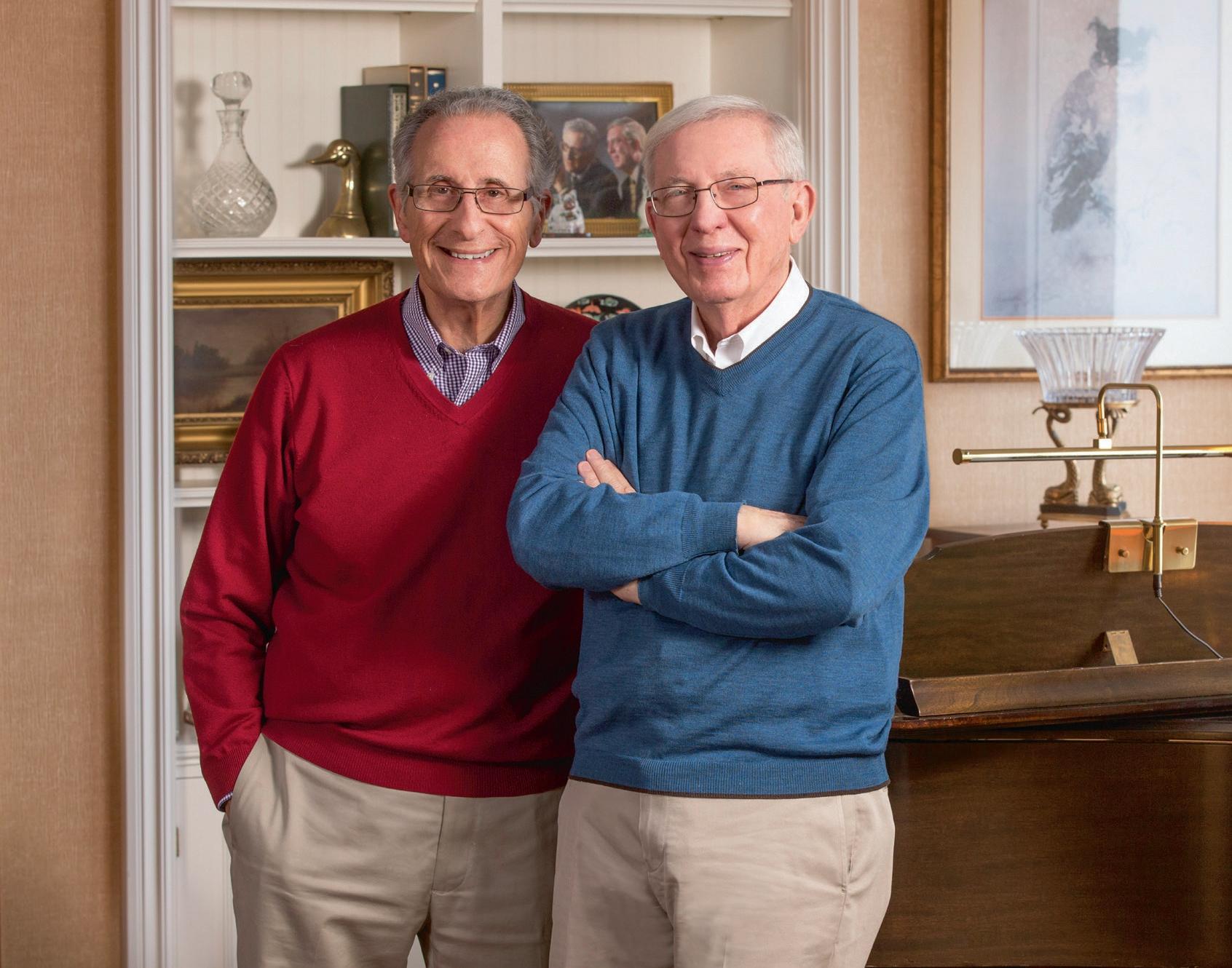
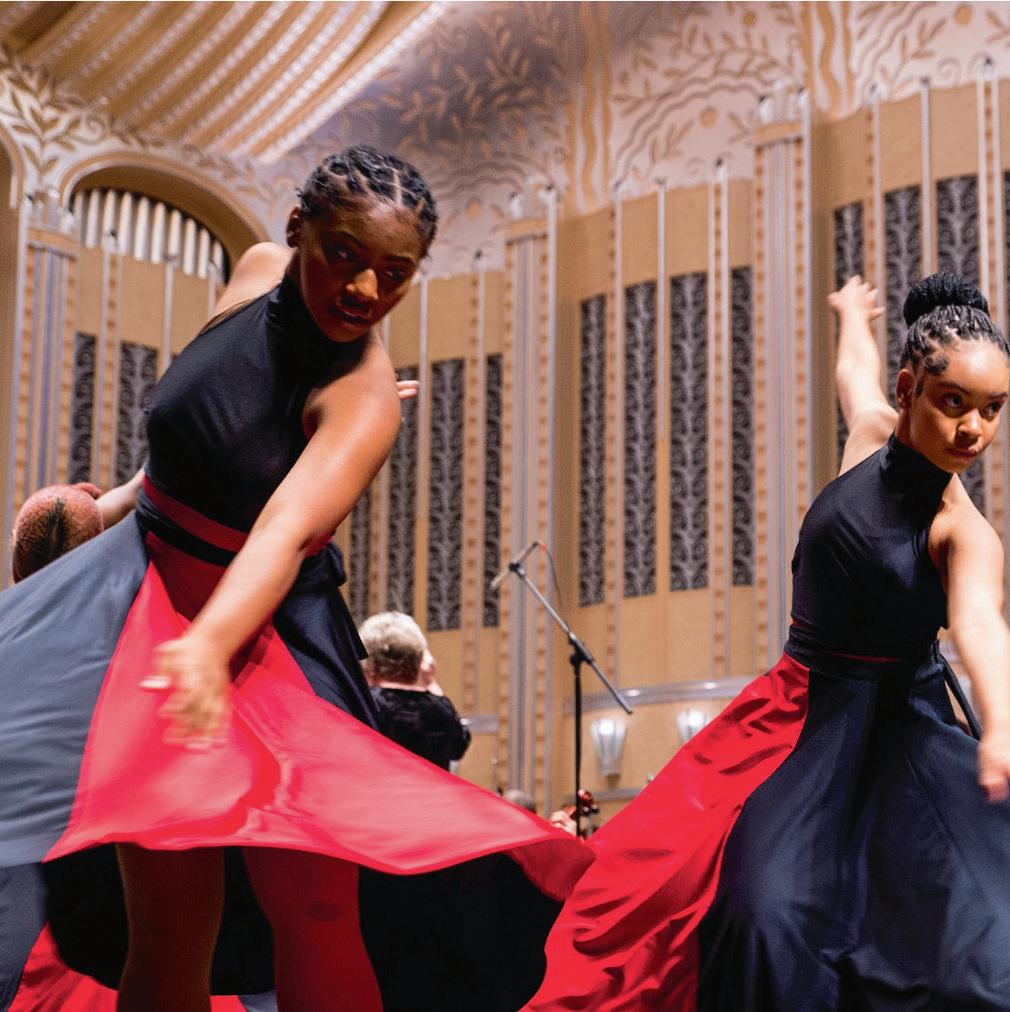



We believe that all Cleveland youth should have access to high-quality arts education. Through the generosity of our donors, we have invested more than $12.6 million since 2016 to scale up neighborhood-based programs that serve thousands of youth year-round in music, dance, theater, photography, literary arts and curatorial mastery. That’s setting the stage for success. Find your passion, and partner with the Cleveland Foundation to make your greatest charitable impact. (877) 554-5054
www.ClevelandFoundation.org/Success
